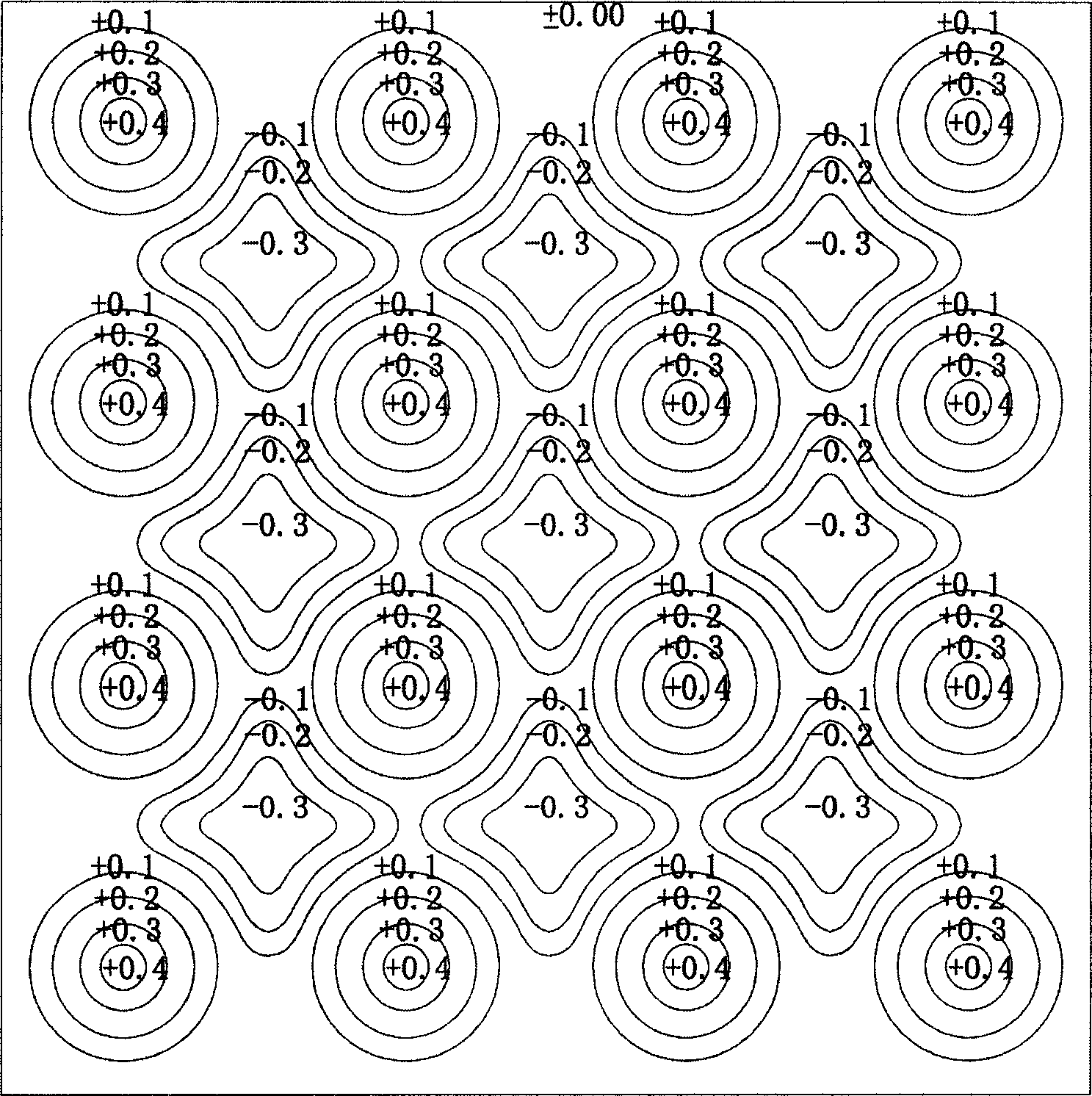Landscape integrated intermittent wet-land rainwater reuse method
An intermittent, rainwater technology, applied in the field of gardens, can solve problems such as needs, increase construction costs, and difficulty in widespread promotion, and achieve the effect of easy promotion and simple methods
- Summary
- Abstract
- Description
- Claims
- Application Information
AI Technical Summary
Problems solved by technology
Method used
Image
Examples
Embodiment 1
[0013] 1. First analyze the soil quality and precipitation of the construction site, such as figure 1 As shown, landscape integration intermittent wetland terrain design forms undulating micro-topographic landscape, forming several continuous low-lying lands. Relative to the ground level elevation +400mm, the slope of the terrain is 25 degrees;
[0014] 2. Replace the soil at the bottom of the micro-topographic valley with mixed soil. The mixed soil is composed of: 40% cinder + 40% local garden soil + 20% peat soil. The particle size of the cinder is 20-30mm, and the thickness of the mixed soil is 0.7 meters ;
[0015] 3. Selection of greening plants: The greening plants in low-lying areas are zoysia, planted by sowing.
[0016] It has been determined that when the daily average rainfall is <25mm (moderate rain), it can absorb 90% of the intermittent wetland rainfall; when the daily average rainfall is <50mm (heavy rain), it can absorb 50% of the intermittent wetland range ...
Embodiment 2
[0018] 1. First analyze the soil quality and precipitation of the construction site, such as figure 1 As shown, landscape integration intermittent wetland terrain design forms undulating micro-topographic landscape, forming several continuous low-lying lands. Relative to the ground level elevation +400mm, the slope of the terrain is 25 degrees;
[0019] 2. Replace the soil at the bottom of the micro-topographic valley with mixed soil. The mixed soil is composed of: 40% cinder + 40% local garden soil + 20% peat soil. The particle size of the cinder is 20-30mm, and the thickness of the mixed soil is 0.5 meters ;
[0020] 3. Selection of greening plants: The greening plants in low-lying areas are tall fescue, which are planted by sowing.
[0021] It has been determined that when the daily average rainfall is <25mm (moderate rain), it can absorb 90% of the intermittent wetland rainfall; when the daily average rainfall is <50mm (heavy rain), it can absorb 50% of the intermittent ...
Embodiment 3
[0023] 1. First analyze the soil quality and precipitation of the construction site, such as figure 1 As shown, landscape integration intermittent wetland terrain design forms undulating micro-topographic landscape, forming several continuous low-lying lands. Relative to the ground level elevation +400mm, the slope of the terrain is 25 degrees;
[0024] 2. Replace the soil at the bottom of the micro-topographic valley with mixed soil. The mixed soil is composed of: 40% cinder + 40% local garden soil + 20% peat soil. The particle size of the cinder is 20-30mm, and the thickness of the mixed soil is 0.6 meters ;
[0025] 3. Selection of greening plants: The greening plants in low-lying areas are Bermudagrass, which are planted by sowing.
[0026] It has been determined that when the daily average rainfall is <25mm (moderate rain), it can absorb 90% of the intermittent wetland rainfall; when the daily average rainfall is <50mm (heavy rain), it can absorb 50% of the intermittent...
PUM
 Login to View More
Login to View More Abstract
Description
Claims
Application Information
 Login to View More
Login to View More - R&D
- Intellectual Property
- Life Sciences
- Materials
- Tech Scout
- Unparalleled Data Quality
- Higher Quality Content
- 60% Fewer Hallucinations
Browse by: Latest US Patents, China's latest patents, Technical Efficacy Thesaurus, Application Domain, Technology Topic, Popular Technical Reports.
© 2025 PatSnap. All rights reserved.Legal|Privacy policy|Modern Slavery Act Transparency Statement|Sitemap|About US| Contact US: help@patsnap.com

